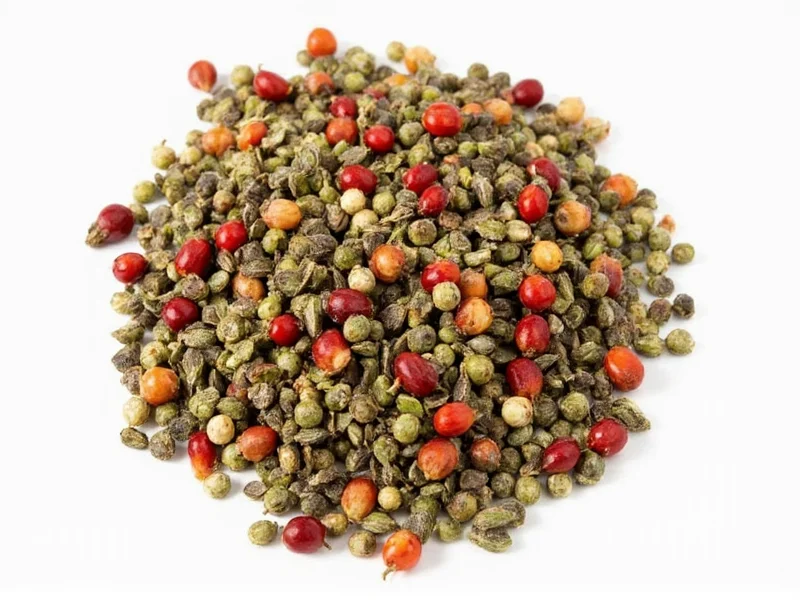Running out of black peppercorns doesn't have to derail your cooking plans. Whether you're preparing a classic steak au poivre, crafting a delicate béchamel sauce, or preserving vegetables through canning, understanding peppercorn alternatives ensures your culinary creations maintain their intended flavor profile. This comprehensive guide explores practical replacements that work across various cooking applications, from everyday meals to specialty recipes requiring specific peppercorn characteristics.
Understanding Peppercorn Substitutes: Matching Flavor Profiles
Peppercorns provide more than just heat—they contribute complex floral, piney, and earthy notes that vary by type. When seeking a peppercorn alternative for creamy sauces or delicate dishes, consider both flavor compatibility and heat level. The right substitute maintains your recipe's integrity while accommodating ingredient availability or dietary needs.
Top 5 Peppercorn Replacements and Their Best Uses
White Pepper: The Closest Flavor Match
White pepper offers the most similar flavor profile to black peppercorns with slightly less floral complexity but comparable heat. It's particularly valuable as a peppercorn substitute for people with pepper allergies since it comes from the same plant but undergoes different processing. Use white pepper at a 1:1 ratio in most savory applications, especially where visual appearance matters, like in light-colored sauces and mashed potatoes.
Pink Peppercorns: A Fruity Alternative
Despite their name, pink peppercorns aren't true peppercorns but rather berries from a different plant family. They provide a mild, slightly sweet flavor with subtle floral notes and minimal heat. Ideal as a peppercorn substitute for steak garnishes or salad toppings, use them at a 1.5:1 ratio (more pink peppercorns needed for equivalent flavor impact). Note that some individuals with tree nut allergies may react to pink peppercorns.
Coriander Seeds: The Mild Option
Ground coriander seeds offer the best peppercorn substitute for creamy sauces and delicate fish dishes, providing citrusy notes without overwhelming heat. This alternative works particularly well as a mild peppercorn replacement in béchamel and other white sauces. Use a 1.5:1 ratio (1.5 teaspoons coriander for every teaspoon of black pepper) and toast the seeds first for enhanced flavor.
Allspice: The Complex Alternative
Allspice combines notes of cinnamon, nutmeg, and cloves, making it an excellent peppercorn substitute for pickling and preserving. When used at half the amount (0.5:1 ratio), it provides depth without overpowering. This replacement works particularly well as a peppercorn substitute for canning where traditional peppercorns might become too bitter during processing.
Cayenne-Paprika Blend: For Heat Control
For recipes where heat matters more than complex pepper flavor, combine 1 part cayenne with 3 parts paprika. This blend serves as an effective peppercorn substitute for people with pepper allergies while allowing precise heat adjustment. Use at a 0.75:1 ratio, adding gradually to avoid overpowering your dish.
| Substitute | Flavor Profile | Best For | Ratio | Allergy Notes |
|---|---|---|---|---|
| White Pepper | Earthy, slightly floral | Creamy sauces, light-colored dishes | 1:1 | Same plant as black pepper |
| Pink Peppercorns | Fruity, mild heat | Garnishes, salads | 1.5:1 | Potential tree nut allergy risk |
| Coriander Seeds | Citrusy, mild | Fish, creamy sauces | 1.5:1 | Safe for pepper allergies |
| Allspice | Warm, complex | Pickling, canning | 0.5:1 | Safe for pepper allergies |
| Cayenne-Paprika | Adjustable heat | General cooking | 0.75:1 | Safe for pepper allergies |
Special Considerations for Specific Applications
Peppercorn Substitute for Steak and Robust Dishes
When preparing steak au poivre or other bold meat dishes, white pepper provides the most authentic experience as a peppercorn substitute for steak. For added complexity, try a blend of white pepper and a pinch of allspice. Avoid milder substitutes like coriander here, as they won't stand up to the rich meat flavors.
Peppercorn Alternative for Creamy Sauces
For béchamel, alfredo, or other white sauces, coriander seeds offer the ideal peppercorn alternative for creamy sauces. Their citrus notes complement dairy beautifully without the visual distraction of black specks. Toast the seeds lightly before grinding for maximum flavor release.
Dietary Restrictions and Allergies
For those seeking a peppercorn substitute for people with pepper allergies, remember that white and black pepper come from the same plant (Piper nigrum) and will trigger the same reactions. Safe alternatives include coriander, allspice, or the cayenne-paprika blend. Always verify individual allergy profiles before selecting substitutes.
Common Mistakes to Avoid
Many home cooks make critical errors when substituting peppercorns. Using chili powder as a direct replacement creates excessive heat without pepper's complexity. Adding substitutes at the wrong cooking stage diminishes their flavor impact—add delicate substitutes like pink peppercorns at the end of cooking. Most importantly, failing to adjust ratios leads to imbalanced dishes. Remember that a peppercorn substitute ratio isn't universal; it varies by substitute and recipe requirements.
Advanced Substitution Techniques
Professional chefs often create custom blends for specific applications. For pickling, combine allspice with a touch of mustard seed as a peppercorn substitute for pickling. When canning, use allspice exclusively as it maintains flavor integrity through processing. For delicate seafood, a mix of coriander and fennel pollen provides complexity without overwhelming the dish.











 浙公网安备
33010002000092号
浙公网安备
33010002000092号 浙B2-20120091-4
浙B2-20120091-4